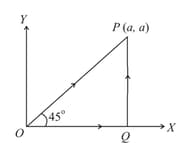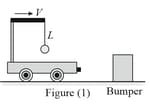BM Sharma Solutions for Chapter: Work, Power, and Energy, Exercise 4: DPP
BM Sharma Physics Solutions for Exercise - BM Sharma Solutions for Chapter: Work, Power, and Energy, Exercise 4: DPP
Attempt the free practice questions on Chapter 8: Work, Power, and Energy, Exercise 4: DPP with hints and solutions to strengthen your understanding. Chapterwise/Topicwise Daily Practice Problems (DPP) Mechanics I JEE Main & Advanced solutions are prepared by Experienced Embibe Experts.
Questions from BM Sharma Solutions for Chapter: Work, Power, and Energy, Exercise 4: DPP with Hints & Solutions
A particle is moved from to under a force from two paths. Path is and path is . Let and be the work done by this force in these two paths. Then,

A spherical ball of mass is stationary at the top of a hill of height . It slides down a smooth surface to the ground, then climbs up another hill of height and finally slides down to a horizontal base at a height of above the ground. The velocity attained by the ball is
Which of the following graphs is correct between kinetic energy , potential energy and height from the ground of the particle?
A ball is suspended from the top of a cart by a string of length . The cart and the ball are initially moving to the right at constant speed as shown in figure . The cart comes to rest after colliding and sticking to a fixed bumper, as in figure . The suspended ball swings through a maximum angle The initial speed is take ,


The spring block system lies on a smooth horizontal surface. The free end of the spring is being pulled towards right with constant speed . At , the spring of constant is unstretched and the block has a speed to left. The maximum extension of the spring is,

The potential energy of a particle of mass free to move along -axis is given by for and for ( denotes the -coordinate of the particle and is a positive constant). If the total mechanical energy of the particle is , then its speed at is
In a shot put event, an athlete throws the shot put of mass with an initial speed of
One of the forces acting on a particle is conservative then which of the following statement(s) are true about this conservative force?
